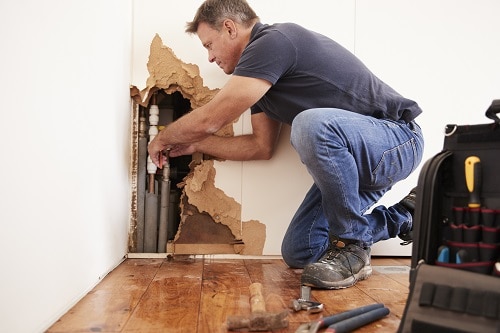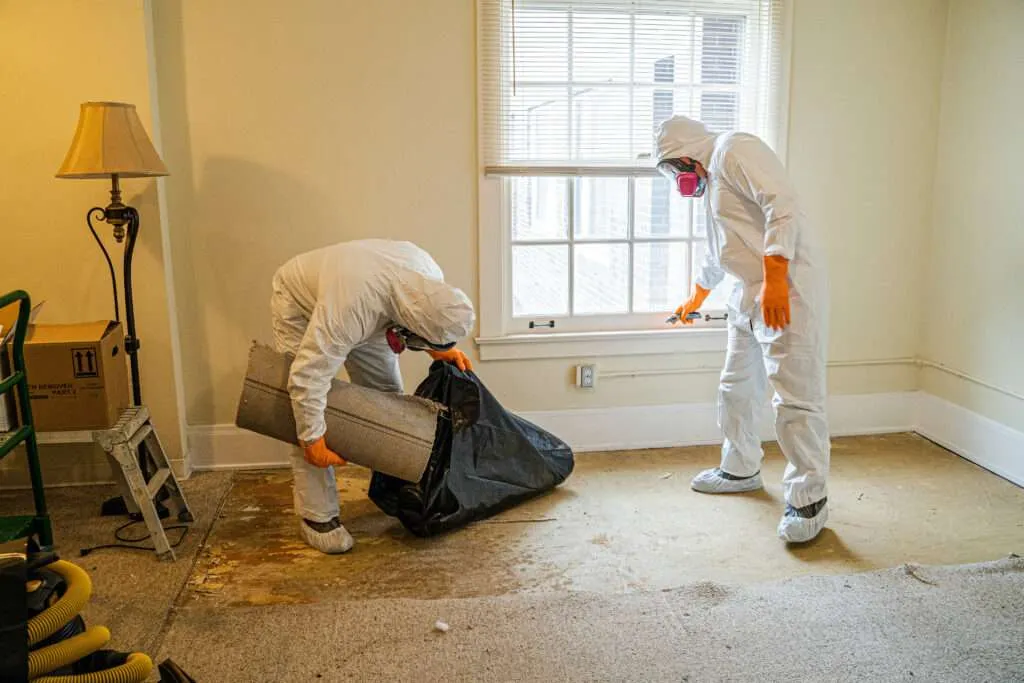Leading Tips for Effective Water Damage Restoration: Protect Your Home Today
Water damage can strike suddenly, creating significant disruption and possible hazards. Effective restoration calls for a systematic technique to minimize more harm. From evaluating the damage to carrying out preventive procedures, each step plays a crucial duty in safeguarding residential or commercial property. Comprehending these methods can make all the difference in the results of a water-related situation. What essential activities should be prioritized to ensure complete security?
Evaluate the Damage Promptly
When a water damage event takes place, it is important to assess the damage instantly to alleviate further concerns. This initial evaluation assists establish the level of the damage and determines affected areas. Water can permeate into walls, floors, and furniture, leading to mold development and structural instability otherwise dealt with quickly. A complete examination must include looking for staining, wetness, and musty odors, which indicate wetness presence. It is also essential to record the damage through pictures and notes for insurance objectives. Involving specialists for a much more thorough analysis might be necessary, especially when dealing with concealed or substantial damage. Flood Cleanup Services. Early acknowledgment and accurate analysis lay the structure for efficient restoration and guard the building from added problems
Shut down the Water
Turning off the water is an important step in avoiding further damage during a water-related event. When a leakage or flooding occurs, prompt activity is essential to reduce the level of the damage. Situating the major water shut-off shutoff ought to be a priority. This shutoff is typically positioned near the water meter or where the water line gets in the property. Once situated, turning the shutoff clockwise will certainly stop the flow of water. In cases where the main valve is inaccessible, specific shut-off shutoffs for home appliances may likewise be utilized. Immediately turning off the water not just protects the home from extra injury yet also facilitates the subsequent restoration procedure, making sure that recuperation initiatives can start right away.
Get Rid Of Excess Water Quickly

Getting rid of excess water quickly is important for reducing damage and protecting against mold and mildew growth in impacted areas. The longer water remains touching materials such as drywall, timber, and insulation, the better the threat of architectural damage and the growth of mold and mildew. Mold Remediation After Water Damage. House owners should act swiftly to evaluate the circumstance and utilize appropriate devices, such as damp vacuum cleaners or pumps, to remove standing water efficiently. If the volume of water is considerable, getting in touch with expert restoration services might be required, as they can give customized devices and proficiency. Furthermore, getting rid of furniture and valuables from the afflicted area can help to lower damage and facilitate the total restoration procedure. Timely activity not just secures building yet also aids in a smoother recuperation trip
Dry the Affected Location
After getting rid of excess water, it is necessary to dry the affected area thoroughly. This entails eliminating any type of standing water and enhancing air circulation to assist in dissipation. Efficient drying will certainly aid prevent mold and mildew growth and additional damage.

Eliminate Standing Water
Quickly addressing standing water is critical for effective water damage restoration. The existence of stagnant water can bring about additional residential or commercial property damage and create a setting for mold development. To minimize these dangers, it is important to eliminate standing water as rapidly as possible. This procedure usually includes making use of completely submersible pumps, wet vacuum cleaners, or specialized removal tools. Experts advise examining the depth and level of the water before selecting the ideal method for removal. Security preventative measures must likewise be taken, consisting of putting on protective gear and making sure electrical power is switched off in impacted locations. When the standing water is successfully removed, the drying process can begin, better guarding the home from continuous damage.
Rise Air Blood Circulation
Improving air flow is necessary for properly drying locations impacted by water damage. This process helps to accelerate evaporation, reducing the danger of mold and mold development. Specialists often suggest making use of followers to produce a constant air flow throughout the room. Placing box fans in windows can attract in fresh air, while high-velocity fans can guide air flow towards damp surface areas. Water Damage Restoration. In addition, opening windows and doors enables for cross-ventilation, boosting the drying out procedure. Dehumidifiers can likewise be employed to get rid of excess dampness from the air, more assisting in drying out. By guaranteeing that air distributes freely, building proprietors can significantly lessen the long-term effects of water damage and protect the integrity of their structure
Check for Mold Growth
Mold development is a serious concern adhering to water damage, as it can bring about wellness problems and architectural damage. After any type of flooding or leaks, it is important to perform a thorough examination of the impacted locations. This consists of checking surprise spaces such as behind wall surfaces, under carpetings, and in basements or attics where dampness may remain. Signs of mold and mildew include a mildewy smell, staining on surfaces, or noticeable development. Residential property proprietors should make use of safety equipment when checking, as mold spores can present health and wellness threats. If mold and mildew is identified, it is crucial to address it immediately, as delaying remediation can worsen the trouble and increase the risk of severe health and wellness issues for residents. Early treatment is essential to reliable mold monitoring.

Fixing and Bring Back Broken Frameworks
When dealing with water damage, it is vital to initial analyze the structural honesty of the impacted areas. This examination helps determine potential hazards and notifies the essential repair approaches. Involving expert restoration solutions assures that the restoration process is carried out safely and successfully.
Examine Structural Honesty First
Before starting any water damage restoration, it is important to assess the structural integrity of the afflicted location. This analysis aids recognize any kind of jeopardized elements, such as beam of lights, foundations, or walls, which might posture safety and security threats - Mold Remediation After Water Damage. Checking for signs of warping, cracking, or mold development is vital, as these indications can expose underlying damage that requires instant attention. In addition, understanding the extent of the damage can direct restoration initiatives and identify whether repair services are practical or if replacement is essential. It is necessary to document findings extensively, as this info can be beneficial for insurance policy cases or future recommendation. Prioritizing structural evaluation guarantees that restoration initiatives continue safely and successfully, ultimately safeguarding the building and its passengers
Usage Expert Restoration Services
Making use of specialist restoration services is essential for efficiently repairing and restoring broken frameworks after water occurrences. These specialists have the essential training, tools, and experience to assess and alleviate water damage completely. They can recognize hidden issues, such as mold growth and architectural weaknesses, that might not be right away apparent. Specialist services additionally utilize sophisticated drying techniques and devices, ensuring that all wetness is removed to protect against more damage. Furthermore, they comply with market standards and guidelines, guaranteeing that the restoration process is safe and reliable. By involving restoration experts, homeowner can expedite healing, reduce long-term damage, and ultimately shield their financial investment. This proactive approach is vital in preserving the stability and safety of damaged frameworks.
Avoid Future Water Damage
To properly stop future water damage, homeowners have to take on an aggressive strategy to repair and maintenance. Normal evaluation of roof coverings, seamless gutters, and downspouts is important; blocked rain gutters can bring about water overflow and roofing system leaks. Furthermore, checking for leaks get more info in plumbing fixtures and home appliances can prevent prospective damage. Property owners ought to likewise think about setting up sump pumps in cellars or low-lying locations to manage water build-up. Sealing fractures in foundations and ensuring correct drainage around the property are crucial action in safeguarding against water breach. Moreover, keeping humidity degrees with dehumidifiers can avoid mold and mildew growth. By applying these safety nets, homeowners can substantially decrease the threat of water damage and safeguard their home for the long-term.
When a water damage event takes place, it is essential to examine the damage promptly to minimize more concerns (Mold Remediation After Water Damage). Eliminating excess water promptly is crucial for minimizing damage and preventing mold development in impacted locations. Quickly attending to standing water is important for reliable water damage restoration. The existence of stagnant water can lead to more residential property damage and create an environment conducive to mold and mildew growth. Prior to starting any type of water damage restoration, it is crucial to assess the architectural honesty of the afflicted area